In cosmetology, understanding the intricate details of hair types and curl patterns is not just a skill; it’s a necessity. As a professional cosmetologist, your clients rely on your expertise to help them achieve their desired look.
Hair Types: The Foundation
Before diving into the specifics of curl patterns, it’s crucial to grasp the foundation of hair types. There are four main hair types, each with its unique characteristics and care requirements.
The Four Main Hair Types
Type 1: Straight Hair
Straight hair is the foundation for many styles. It lacks curl or wave, often appearing shiny and reflecting light easily. However, it can become greasy quickly due to the direct path oil takes from the scalp to the ends.
Type 2: Wavy Hair
Wavy hair adds versatility to your styling options. It has a gentle ‘S’ shape and can range from loose, beachy waves to more structured waves, providing a wide range of styling opportunities.
Type 3: Curly Hair
Curly hair brings life and bounce to your creations. It forms ringlets or coils, ranging from loose curls to tight, springy spirals. Curly hair requires extra moisture to stay hydrated and defined.
Type 4: Coily Hair
Coily hair offers a beautiful texture, but it’s also the most fragile. The tightly coiled or zigzag pattern requires meticulous care to prevent breakage and maintain moisture.
Curl Patterns: A Deeper Dive
Understanding curl patterns is an advanced skill that allows you to create truly unique styles.
The Three Curl Patterns
Pattern 2A-2C: Loose Waves
Loose waves add a touch of elegance to any style. They feature gentle ‘S’ shapes and can be found in Type 2 hair. These waves vary in size and structure, offering versatility in styling.
Pattern 3A-3C: Spirals and Ringlets
Spirals and ringlets are a hallmark of Type 3 hair. They create more defined curls, ranging from loose spirals to tight ringlets. These patterns provide a playful bounce to your clients’ locks.
Pattern 4A-4C: Tight Coils
Type 4 hair boasts tight coils with a unique texture. These coils are tightly wound and require meticulous care to maintain moisture and prevent breakage, making them ideal for creative styling.
Determining Hair Type and Curl Pattern
As a professional, you need to determine your client’s hair type and curl pattern quickly. Observation and communication with your client are key. Examine their natural hair when it’s clean and free of products to make an accurate assessment.
Hair Care Tips for Different Types and Patterns
Tailoring your care routine to your client’s hair type and curl pattern is crucial for client satisfaction.
- Type 1 and 2: Use lightweight products to prevent weighing down the hair.
- Type 3 and 4: Prioritize moisture-rich products to keep curls hydrated.
- Co-washing can be beneficial for Type 3 and 4 hair.
- Limit heat styling to prevent damage.
Selecting Professional Products
Choosing the right professional products is vital for maintaining your clients’ hair health and style. Invest in high-quality products that cater to specific hair types and curl patterns. Experiment with different brands to find the best fit for your salon.
Advanced Styling Techniques
Your cosmetology skills should include advanced styling techniques. Explore various hairstyles that enhance your clients’ natural texture, from sleek straight styles to voluminous curls. Your expertise will shine through in your creations.
Dispelling Hair Myths
As a cosmetology professional, you’ll encounter various hair myths. Let’s debunk a few:
- Myth: Trimming hair makes it grow faster.
- Myth: Split ends can be repaired with products.
- Myth: Hair becomes immune to products over time.
Clearing up these misconceptions will help you provide accurate information to your clients.
Conclusion
As a professional cosmetologist, your expertise in understanding hair types and curl patterns is essential. Armed with this knowledge, you can excel in your profession and offer top-notch service to your clients, helping them achieve their desired looks.
If you are interested in becoming a cosmetologist, take our free practice test to take your preparation for the exam to the next level.
FAQs for Cosmetology Professionals
1. How can I quickly determine a client’s hair type and curl pattern?
Observation and communication with the client are key. Examine their clean, product-free hair to make an accurate assessment.
2. What are the best products for styling Type 4 coily hair?
For Type 4 coily hair, prioritize moisture-rich products, leave-in conditioners, and curl-defining creams.
3. How can I address hair damage caused by excessive heat styling?
Advise clients to limit heat styling, use heat protectant products, and recommend deep conditioning treatments to repair damaged hair.
4. Are there any specific certifications for mastering hair types and curl patterns?
While not mandatory, obtaining certifications or attending advanced cosmetology courses can enhance your expertise in working with different hair types and curl patterns.
5. What should I do if a client insists on a style that doesn’t suit their hair type or curl pattern?
It’s important to communicate honestly with your clients. Offer alternative styles that complement their natural hair, and explain the potential risks of the desired style.


